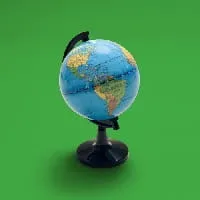Whether true supply chain resilience is even possible under current conditions, at least in a way that looks recognizable to someone from 2019, is debatable. Broadly speaking, with extreme frailty in global supply chains continuing, organizations should focus on shock supply chain risks, and building their ability to be nimble–in finding both alternate sourcing and stockpiling (not just through financial contracts), considering alternative product formulations and carefully reviewing contractual risk in the event their ability to deliver in a timely fashion becomes threatened.
As was the case during the pandemic, all organizations should regularly engage in contingency planning, using scenarios that include the risk of a key customer or key supplier suddenly becoming off-limits.
We highlight below two major areas of risk, with a focus on Russia and China, that we expect to inform extreme near-term and medium-term market dynamics. The reader may wish to consider these risks while contingency planning.
Geopolitical Scene-Setter
Thus far, the West has used sanctions and diplomatic measures to impose costs on Russia. For most western leaders, turning Russia into an economic and diplomatic pariah is preferable to putting their own citizens at risk, and to avoid options that might lead to a broader ground war in Europe. As evidence of atrocities continue to emerge, we expect that sanctions will increase. We also expect that the reputational impact of associating with Russia will become overwhelming for many of the international companies that still have operations there. Even for firms headquartered in countries that have not applied widespread sanctions against Russia, the prospect of secondary sanctions from the U.S. serves as motivation to comply with the West’s measures.
The West has, in the past, observed a hard line in its refusal to send weapons platforms (like ships, planes and until recently, tanks) to Ukraine, but has been willing to send individual weapons. However, as Germany more openly contemplates providing armored vehicles to Ukraine, it seems this line is blurring significantly. A war expanding beyond Ukraine would clearly have even greater supply chain implications, particularly if it reaches NATO territory.
The constraints to the world’s fuel, food, metal and (longer-term) noble gas supply caused by Russia’s war and the West’s response have had immediate price impacts that will continue and could get even worse. Business confidence in Germany, heavily hit by higher energy costs and supply disruptions across Eastern Europe, has posted the steepest one-month drop on record in March. Consumers have not yet felt the full brunt of dislocations in the nickel and palladium markets in particular, which will impact battery and semiconductor productions. As food insecurity increases and prices rise, workers in areas dependent on Russian wheat (Egypt, Turkey, Bangladesh, Nigeria and Pakistan) are expected to demand wage increases. If wage hikes can’t keep pace with food inflation, social unrest is likely to ensue. This may strain supply chains originating or passing through these countries.
When the West runs out of new economic and diplomatic pressures to apply, it may be faced with a stark choice between engaging in open, armed conflict or facing further humanitarian disaster. Sanctions still have road to run; additional targets have already been identified and more targets will emerge in an intelligence-informed way. Ultimately, there is a tremendous incentive for the West to find ways of deepening the bench of available diplomatic and economic tools, and a tremendous disincentive to use potentially escalatory tactics.
Not all countries may align with the West’s approach to dealing with Russia’s invasion of Ukraine. In Asia, the U.S. has taken an increasingly hard line with some nations on trade issues for the past five years. But with Western dependence on Asian suppliers still critically high–even after the supposed rush to on- and near-shoring during the pandemic–the politics of international trade may become prohibitive for policymakers, making the prediction of outcomes difficult. We expect limit-testing behavior by both sides.
Key Areas for Contingency Planning
Sanctions impact supply chains severely. A sanction on a Russian investor or entity means that goods flowing into the West generally cannot contain items made by, or with, that entity. And it certainly means that entities doing business in or with the U.S. cannot do business with that entity given the threat of secondary sanctions.
The likely continued dependence on dynamic sanctions creates tremendous uncertainty for manufacturers and financial institutions. Preparing scenarios where downstream suppliers suddenly lose operational capacity because they are sanctioned is key. All organizations should increase ongoing diligence activities for its suppliers who may have Russian ownership or ties to Russia and Russia’s allies. This mandate should no longer be viewed as just a matter of good governance and legal risk management, but as an operational necessity. Contingency planning should also be done should the war extend beyond Ukraine. Manufacturers may consider implementing a “supply chain plus” model, whereby they maintain back-up suppliers should risks come to fruition.
A complicating factor is also the increasing frequency of substantial leaks of banking information–something Kroll expects will increase, especially at firms that have relationships with parties who are later determined to be participating directly or indirectly in the Russian war effort. For key suppliers, organizations may wish to establish ongoing monitoring of negative media, so that they can react more nimbly in the event a supplier is, unknown to them, controlled by a bad actor.
Asia – Supply Chain Shocks and Escalating Risks for Secondary Sanctions Impact
Russia’s war has exacerbated global supply chain issues that were sparked by the pandemic. But the biggest disruption to western supply chains still stems from China’s zero-COVID policy, which has produced several low notice shutdowns in manufacturing territories. As dependent as much of the West is on Russia and Ukraine for fuel, wheat, nickel and palladium, the West is almost entirely dependent on Asia for everything else. The geopolitical reality of this cannot be understated, nor can the layers of complexity it adds to an already difficult relationship between the West and China regarding advanced technology, security and intellectual property concerns.
With the rail supply line between China and Russia now out of reach for most producers, the cost of shipping goods between Russia and Asia is non-trivially higher. The short-term risk of inadvertently engaging in an illegal secondary market for sanctioned items is low, but this will change very quickly as creative solutions are found by sellers and buyers and as prices for Russian inputs plummet, and operations and compliance teams should take note.
For certain Asian countries, it may be advantageous to continue to deal with sanctioned Russian entities, as the sanctions and reputational risks of dealing with Russia have caused most Russian commodities to plummet in price. For certain kinds of raw commodities, like nickel and palladium, determining point and time of origin is difficult without insider intelligence. This may lead some to believe that they can continue assuming that the use of Russian-origin precursor materials is a “safe” bet–because in the event such materials are in fact of illegal origin, it would be hard to be caught. We expect extreme scrutiny by Western law enforcement and intelligence agencies of sourcing and markets–especially for technology companies in Asia, as well as those in the telecommunications infrastructure and the high technology space.
Conclusion
The success of the West’s strategy–economic and diplomatic pressure–requires that every tool in its arsenal be brought to bear. This week’s announcement by the U.S. Justice Department of its asset seizures is the latest example, and we expect more enforcement by the Justice Department, more sanctions by the Treasury Department and activity to help offset supply chain shortages under the Defense Production Act. Because the Western strategy is completely dependent on aggressive enforcement, assuming anything other than a zero-tolerance policy is a mistake. Organizations that ignore this reality are putting themselves in peril. Firms will need to consider the supply chain disruptions from Russia’s war on Ukraine alongside the pre-existing, COVID-driven supply chain issues in Asia. There will likely be a shift away from just-in-time manufacturing toward building inventories. With such an uncertain backdrop, firms will need to contingency plan and may want to adopt a “supply chain plus” model. This model sacrifices efficiency for resilience, which may be a worthwhile trade-off given the likelihood of additional pandemics and geopolitical tensions going forward.





